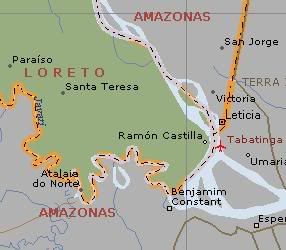You are not logged in.
Dear visitor, welcome to WesWorld. If this is your first visit here, please read the Help. It explains in detail how this page works. To use all features of this page, you should consider registering. Please use the registration form, to register here or read more information about the registration process. If you are already registered, please login here.
Quoted
Excerpt from Political Relations in South America, Volume III (1920-1940)
Hernando Diaz became president of Peru following the HEBCo bombing assassination of the Peruvian government. Diaz was a Social Democrat and, at the time of his assumption of power, was very popular with the lower class and the military.
Unfortunately, Diaz's term proved to be rocky from the start. Within days of his assumption of power, he committed the Peruvian government to aid the Bolivian earthquake victims, with the intent of eventually incorporating Bolivia into Peru. Brazil and Chile dealt his plans a substantial blow in late 1936 when they voted to abolish Bolivian reparations to Peru, but the Peruvian troops aiding the Bolivian People's Brigades stayed in place, and Diaz cherished the hope that Bolivia could still be incorporated into a Trans-Andean Confederation with Peru.
The Chilean government was aware of Diaz's aspirations for a Trans-Andean Confederation, and was opposed to this idea. Although they had tried to blunt Diaz's maneuvers in Bolivia through their quiet support of President Stiles of Bolivia, they failed to act strongly enough to deter Diaz, who came to believe the Chileans would back down rather than face an actual war. The Bolivian Army was too small to reassert control of the regions which now fell under People's Brigade control (and therefore the Peruvian Army's control) and Stiles could not confront Diaz without significant foreign help.
Although Diaz's plans seemed well in hand in Bolivia, his popularity at home was slowly falling. Political opponents in Congress and the rest of the government were suffering 'accidents' or disappearing or resigning under harrassment or blackmail. Diaz and his chief lieutenant, de la Nazca, ably exploited the running nationalist sentiment of the army by providing evidence of foreign plots, but in mid-May, Diaz's opposition announced that a witness intended to testify to Congress against Diaz's activities in Peru.
Diaz delayed as much as possible, but the opposition hardened and persisted with their attempts to discredit Diaz. The President's advisers thus created a plan to start a military confrontation with a local neighbor in order to help rally the people behind Diaz. All of the neighbors had allies - Chile was covered through the ABC Alliance and FAR, Brazil was covered by ABC, and Colombia covered through FAR. Of these three powers, the President's advisers suggested confrontation with Colombia, as they interpreted it as the least likely to respond with war.
By mid-May 1937, Diaz began making nationalists statements regarding the Colombian city of Leticia, which had been disputed until only a few years before. The Peruvian Navy also began searching Colombian merchant ships for "arms runners" with the hope Colombia would start saber-rattling. This evidence of "foreign aggression" would undoubtedly boost Diaz's sagging public support.
Unfortunately, on May 30th, the situation flew out of Diaz's hands as hundreds of well-armed Peruvian irregulars, members of the Peruvian Nationalist Party, marched into Leticia, emboldened by Diaz's rhetoric. The Colombians were outraged and mobilized the Army, and Diaz, believing his northern counterparts would back down short of war, decided to capitalize on the situation. Diaz dispatched his most hardline troops to enter Leticia and expand upon the operations of the irregulars.
Diaz's critics in Congress had no intent to back down either. As the Peruvian and Colombian armies squared off along the Amazon, and diplomats worked overtime, they continued baying for Diaz's resignation. Although the Colombian government, as expected, showed their readiness to negotiate with Peru, they signaled that they also weren't planning to back down...
This post has been edited 1 times, last edit by "perdedor99" (Jul 29th 2009, 2:56pm)
 [/SIZE]
[/SIZE]

 [/SIZE]
[/SIZE] Forum Software: Burning Board® Lite 2.1.2 pl 1, developed by WoltLab® GmbH
